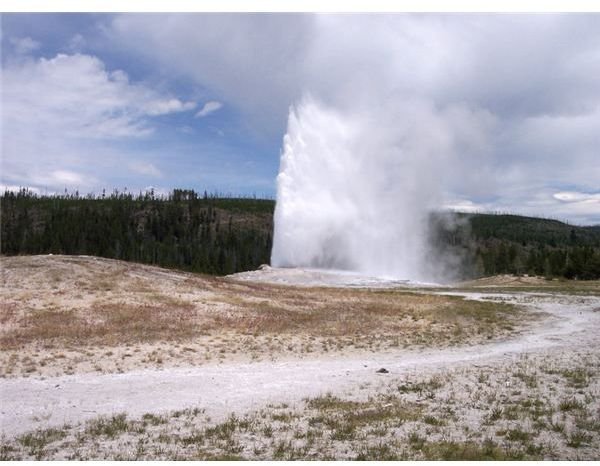Why Do Geysers Erupt? - Geysers are Earth's Natural Pressure Cookers
Background on Geysers
Geysers, also known as natural hot water springs, are each unique and different in their own way. Geyser activity is characterized by violent and intermittent water discharges (eruptions) directly from the Earth’s surface often mixed with steam. But, why do geysers erupt like this? Geyser activity only appears on areas with certain specific geological characteristics that could cause these geyser eruptions.
Although geysers are different from each other, they share certain common characteristics. Before we can learn why geysers erupt, we need to cover the basic parts of any geyser’s system. They are:
- a water supply
- a heat source
- a plumbing system
A water supply must be abundant for geysers to exist. Geysers are usually located near rivers or lakes where there is plenty of water. This water supply can also come from the melting of snow or of course, rain.
The heat source needed for geysers to exist comes from the Earth in the form of geothermal energy. Geysers are all located in areas where there is volcanic activity. The enormous amount of energy present in hot volcanic magma is responsible for heating up the water of geysers.
The plumbing system (fissures, channels, cracks, and spaces existent in the ground beneath the geyser basin) is crucial for a geyser to exist. The plumbing system must have certain specific characteristics that will allow water to be thrown violently into air.
Why do Geysers Erupt?
Cool water (from rivers, lakes, rain, or snow melting) starts to flow into the geyser and continues to do so until it fills the “plumbing” system as described above. The water located at deeper zones of the plumbing system may heat enough to increase its temperature above the boiling point of the water (212 Fahrenheit or 100 Celsius at sea level). Steam forms and rises through the channels of the plumbing system until it meets with cooler water. Although steam may condense initially, it will gradually heat all the water contained within the plumbing system until the whole system is at boiling point.
When all the water in the geyser system is boiling, pressure starts to build up (because of the special characteristics of the plumbing system). It is just like a pressure cooker. Eventually, steam will reach the geyser’s surface and this will cause a violent hot water and steam jet-like eruption. The eruption will stop when the temperature of the water falls below the boiling point or when there is no longer enough water in the geyser’s plumbing system.
Once a geyser’s eruption finishes, the process of filling, heating, and boiling is repeated leading to another geyser eruption. This explains the intermittence of geyser eruptions.
Sources
T. Scott Bryan (1990). Geysers: What They Are and How They Work Roberts Rinehart Publishers, ISBN 0911797742, 9780911797749
Geyser animation: https://www.classzone.com/books/earth_science/terc/content/visualizations/es1403/es1403page01.cfm?chapter_no=visualization
Why Geysers Erupt: https://mms.nps.gov/yell/ofvec/exhibits/eruption/index.htm
Image Credit
Old Faithful Geyser, Yellowstone National Park. Photo taken by en:User:Colin.faulkingham on July 28, 2005 and released to the public domain. Source: English Wikipedia.
This post is part of the series: All About Geysers
In this series, you will learn about geysers-what they are, how they are formed and the conditions necessary for this to occur, how they erupt, and other interesting geyser facts.
